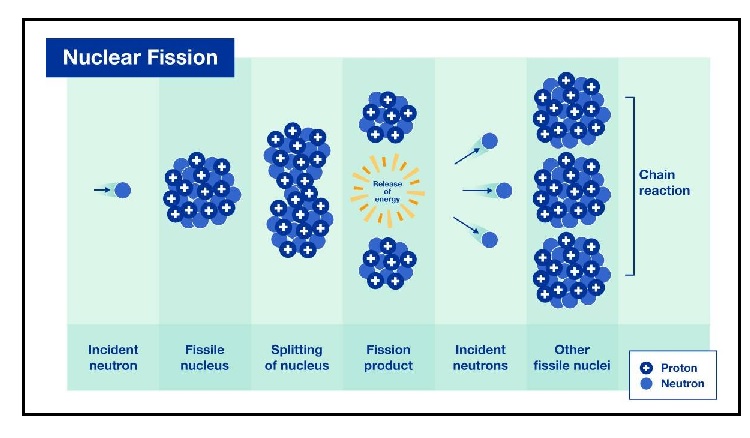The rapid economic growth of India and the status of the primary energy consumption stands which stands at 3rd highest globally triggers the demand for energy.

|
About |
Pressurized Heavy Water Reactor (PHWR) |
Light Water Reactor (LWR) |
Protype Fast Breeder Reactor |
|
Type |
Thermal Neutron Reactors |
Thermal Neutron Reactors |
Fast Neutron Reactors |
|
Fuel |
Natural Uranium |
Low Enriched Uranium |
Use uranium-238 to breed plutonium in a sodium-cooled fast reactor design. |
|
Coolant |
Heavy Water (deuterium oxide D2O) |
Normal water |
Liquid sodium is used in the Kalpakkam nuclear reactor. |
|
Moderator |
Neutron |
Neutron |
No moderator is used. |
|
India |
IPHWR 700 is designed by Nuclear Power Corporation of India Limited (NPCIL) |
900 MWe LWR design is prepared by Department of Atomic Energy |
It is designed by Indira Gandhi Centre for Atomic Research |
To know about the history of India’s nuclear program click here
|
Status of Nuclear Energy in India |
|
References